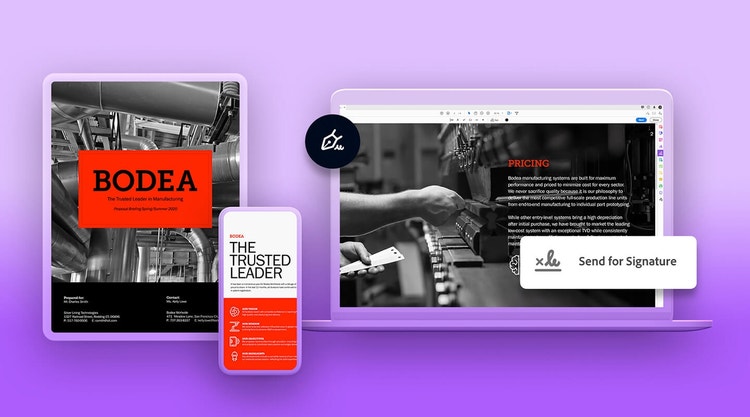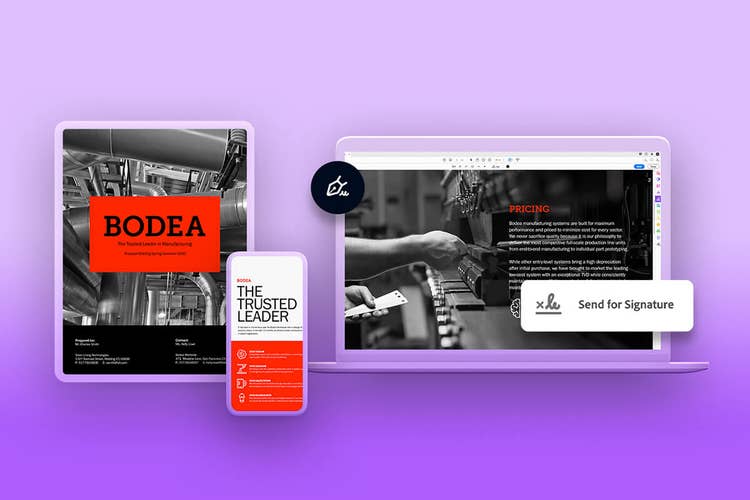Adobe Acrobat Sign
What is a letter of intent, and how do you write one?
Letters of intent often initiate business transactions and can set expectations for all parties before any binding agreement comes into play.

What is a letter of intent?
A letter of intent (LOI) is a document written in business letter format that declares your intent to do a specific thing. It’s usually, but not always, nonbinding, and it states a preliminary commitment by one party to do business with another party. A letter of intent is very similar to a memorandum of understanding, a nonbinding document that usually precedes binding agreements.
Why would you use a letter of intent?
Whether working independently or as part of a larger organization, anyone can use an LOI. For individuals, a letter of intent is comparable to a personal pitch that states their intent to accept an opportunity — it doesn’t set specific terms of a potential transaction or count as due diligence. For students or job seekers, for example, it can simply be a way to show professional courtesy and stand out from a crowded field of potential applicants.
On the other hand, businesses need due diligence before they engage in a transaction. That means taking reasonable steps to satisfy specific legal requirements by laying them out in detail in the letter’s contents. Those specifics can include being transparent about the purpose of the intent, the size of the transaction, the potential cost, and when the business hopes it will occur — although it can cover even more than that.

Jobs
Job seekers write letters of intent to hiring managers as a way to introduce themselves and provide more context and information about their experience. Unlike cover letters, you can send letters of intent at any time, with or without a job application. Job postings can attract numerous responses, and a letter of intent can get you noticed. It can also make it easier for a recruiter or employer to recognize additional information about you (beyond your current job title or LinkedIn profile), such as specific skills and experience related to the open position.
Business
Businesses use letters of intent to announce new transactions or relationships, before official paperwork like definitive agreements or purchase agreements is created. Sales, purchase, mergers, and joint ventures can all begin with LOIs, declaring their intentions and announcing who will be involved in the potential interaction.
Education
Students may submit a letter of intent to a university as a part of their admissions materials. This usually declares their intent to enroll and includes an outline of their educational background. If a student is applying to a graduate program, the letter should also include specific examples of what they intend to study. Letters of intent in education are also sometimes known as statements of purpose.
How do businesses use letters of intent?
Before creating official paperwork like definitive agreements or purchase agreements, businesses use letters of intent to announce new transactions or relationships. Sales, purchases, mergers, and joint ventures can all begin with LOIs, declaring their intentions and announcing who will be involved in the potential interaction.

What to include in your letter of intent.
While they’ll be a little different depending on your unique situation, letters of intent should give all parties a clear roadmap for what’s to come, should each party act in good faith or stay true to their word. They introduce goals, expectations, and basic terms such as time frames for potential transactions, which helps all involved to better understand the potential business deal structure. This makes it simpler for parties to identify potential deal-breakers or binding items that will become important in the future. It can also be helpful having a letter of intent template as a reference to ensure nothing gets missed.
Take a look at a sample letter of intent, and see what to include in yours, from the subject line and salutation to the signature.
Turn your intentions into actions with an e-signature.
If a letter of intent is a binding contract or if you want to verify that a recipient has reviewed it, you’ll want to include an option for them to return it with a signature. Sometimes preliminary negotiations can include disclaimers or legal documents such as a nondisclosure agreement. E-signatures can make these initial correspondences move faster.
E-signatures in action.
Letters of intent are the beginning of a relationship. E-signatures can help move that relationship along.
Faster contracts, less time in the inbox.
Adding e-signatures to correspondence doesn’t just cut down on paper; it can also reduce the time everyone spends opening, reading, and sorting through emails. Find out how Adobe reduced contract-related email traffic by 75 percent and made contracts easier with e-signatures.
More efficient college applications.
Applying for college can be complicated. Pace University made the process easier for high school students and other applicants. Some of their forms required up to ten signatures. But with e-signatures, forms went from potential bottlenecks to an easy, streamlined process.
Make your letter of intent even better with Adobe Acrobat Pro.
Adobe Acrobat Pro makes it easy for parties to exchange signatures and begin official relationships. Save time, save paper, and act on your intentions with Acrobat.
Letters of Intent: Your questions answered.
How is a letter of intent different from a letter of interest?
While both letters express interest, the main difference between a letter of intent and a letter of interest is the level of commitment to the outcome. For example, a letter of intent to a graduate school lets you show why you’d be a benefit to them, and that you fully “intend” to take their offer if accepted. A letter of interest is less formal. It’s a good choice if you’re reaching out to an organization that doesn’t have an open position listed, but that you’d still like to connect with or demonstrate your interest in their business, purpose, or mission.
Is a letter of intent binding?
The answer depends on how the letter is written. For example, a letter of intent could be interpreted as a binding agreement if the parties indicated their agreement on specific terms of a business transaction. However, if any of the terms were written vaguely or left open for future negotiation, the letter of intent may not be considered binding. Meaning that, depending on the exact language and wording used, a letter of intent could be binding — or not. To know better where yours falls on this legality question, you should have an attorney review your letter before you finalize it.
Where can I find samples of letters of intent?
There are many situations where using a letter of intent sample can speed up the writing process and help you craft a standout statement. Whether you’re looking for LOI templates for a business merger, joint venture, school application, real estate transaction, or other, you can download and customize a wide range of free letters of intent samples directly from Adobe Express.
What to include in your letter of intent.
While they’ll be a little different depending on your unique situation, letters of intent should give all parties a clear roadmap for what’s to come, should each party act in good faith or stay true to their word. They introduce goals, expectations, and basic terms such as time frames for potential transactions, which helps all involved to better understand the potential business deal structure. This makes it simpler for parties to identify potential deal-breakers or binding items that will become important in the future. It can also be helpful having a letter of intent template as a reference to ensure nothing gets missed.
Take a look at a sample letter of intent, and see what to include in yours, from the subject line and salutation to the signature.
